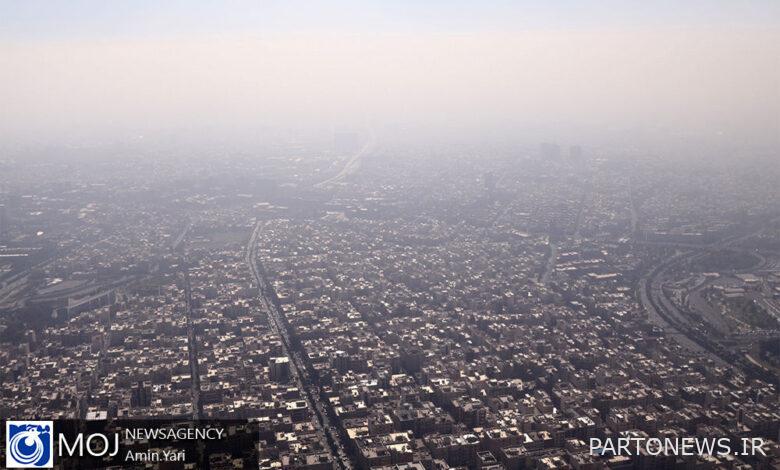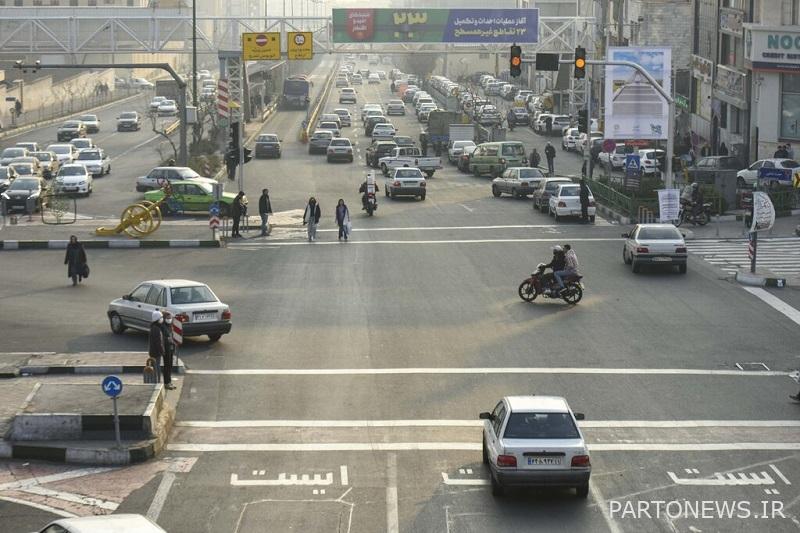Air pollution knows no seasons; The reality is one step higher/ Does the clean air law have scientific support?

According to the social reporter of Moj news agency, every year in the middle of the autumn season and with the arrival of cold air pollution We are this uninvited guest in our homes and cities, but it is very strange and unpleasant to witness a problem in the summer. The cold days of the year, which are still far from their arrival.
However, there have been reports of the release of some other gases in addition to the polluting particles for several years. Gases that have an unnatural origin and are man-made. These days, we can see that the news of “air pollution” has become the headline of many news in the media, in such a way that with the announcement of the unhealthy air in Tehran for sensitive groups, citizens were asked to leave their homes only for essential cases.
Of course, it goes without saying that this problem is not unique to Tehran and some other cities are also struggling with the challenge of air pollution in these hot summer days. As “Zohreh Ibaadi”, Deputy Director of Human Environment of the General Directorate of Environmental Protection of Tehran province, says: “The most important pollutant of Tehran’s air in the hot season is ozone gas, and considering that the General Directorate of Meteorology of the province has predicted that we will probably experience a hotter summer this year than the previous year, it seems that in the summer of 1402, the number of polluted days will increase compared to the summer of 1401.”
In recent years, air pollution has become an unsolvable problem, sending thousands of people to the hospital every year and sometimes dying in silence. Based on the statistics of the Ministry of Health from 2015 to 1400, 76 thousand people die due to air pollution and it is estimated that more than 11 billion dollars of economic damage was caused in different sectors in 1400 alone.
The impact of air pollution on life and the environment
Air pollution is the presence of any type of harmful substance in the ambient air used by humans, plants and animals, which somehow endangers human health or the environment. In fact, any kind of development and progress requires special attention to the components of health and healthy environment. According to the World Bank in 2016, air pollution is the fourth leading cause of death worldwide and one out of every 10 deaths worldwide is due to exposure to air pollution. The economic cost of air pollution is also very significant. According to the statistics of the World Bank, 2.3% of Iran’s gross domestic product is spent on air pollution.
Many forms of pollution can have a widespread and long-term negative impact on the health of humans, plants and animals, or the entire ecosystem. Cars, public transportation such as buses and worn-out taxis, trucks, etc. are the biggest contributors to fossil fuel vehicles. According to the World Health Organization (WHO), air pollution causes seven million premature deaths annually.

How dangerous is pollution in Iranian cities?
According to the World Health Organization, Iran is ranked the 24th most polluted country in the world, and in 2021, it was among the 10 countries whose pollution has exceeded the permissible limit. Many big cities witness smog particles that cover the air in some months of the year and the citizens of these cities suffer from pollution. A city like Handijan in Khuzestan was ranked among the most polluted cities in Iran in 2019 and was at an unhealthy level for sensitive groups. Air pollution does not only affect the environment, but also affects children, pregnant mothers, the elderly, and immunocompromised patients. Sore throat, chest infection, skin allergy, etc. are among the allergies that cause allergies to people due to chemicals. Therefore, it can be said that many polluted cities in the country are suffering from a disaster called air pollution, so in order to reach the desired rank, USAQI should be improved and the level of PM2.5 should be addressed.
What factors affect air pollution?
Our country is facing environmental challenges such as air pollution due to special climate and weather conditions. Mass construction can cause air pollution, smoke from vehicles, including main motor vehicles such as cars and motorcycles, as well as heavy vehicles such as trucks, lorries and buses with a weight above a certain weight, which usually work with diesel engines, are other factors of air pollution. 80% of pollution in Tehran, as the capital of the country, is caused by the emission of vehicles, which is an alarmingly high number considering that the number of vehicles increases every year. Emission of greenhouse gases as well as improper disposal of waste or waste materials and factories are also important factors of air pollution in Tehran.
When does Iran experience the most pollution?
In most cities of Iran, air pollution increases in the middle of the year. Although there are scattered differences between cities that fall outside the usual boundaries. The highest statistics of Tehran were in the months of November and December with an annual average of 25.9 micrograms per cubic meter, which places it in the range of moderate pollution. Looking at the numbers at the end of the year, they are well above the annual average, reaching 43.9 micrograms per cubic meter and 41.1 micrograms per cubic meter, both of which are in the “unhealthy substance sensitive groups”. Shushtar city had the highest reading of the year in “November of the year” 2019 with a very high coefficient of 55.9 micrograms per cubic meter, which was the highest monthly record in Iran as a whole, which is a very unfavorable ranking for being classified as such for PM2.5 readings between 55.5 and 150.4 micrograms per cubic meter. By considering this information, it is possible to take preventive measures for the residents during this time of the year when the levels of smoke, fog and air pollution increase. Heavy vehicular use and areas that see high volumes of traffic often have high levels of pollutants such as nitrogen dioxide (NO2) and sulfur dioxide (SO2) in the air, with nitrogen dioxide in particular being released from vehicles, which is often somewhat beneficial; It shows the level of pollution by vehicles only. Other pollutants in the air can be pollutants such as black carbon and volatile organic compounds (VOCs), both of which are produced from the incomplete combustion of fossil fuels as well as organic matter, thus originating from both vehicles.
Read more:
Serious damage of air pollution from head to toes!/ What should we eat on polluted days?
Preventing diseases caused by air pollution/What diseases does air pollution cause?
Fuel burning, poor quality fuel or excessive traffic?/ Does air pollution have the potential to make the responsible agencies accountable?
What to eat and what not to eat when the air is polluted?!
Air pollution makes people violent
What is the solution?
With the increase in respiratory diseases in recent years, many countries are trying to take measures against polluting sources. The final elimination of old buses and cars and their replacement with newer models with natural gas is one of the strategies that these countries are taking to reduce air pollution. Also, the provision of public transportation infrastructure and the introduction of air pollution control plans that can have more detailed monitoring of the offending factories are among the factors to reduce pollution.

